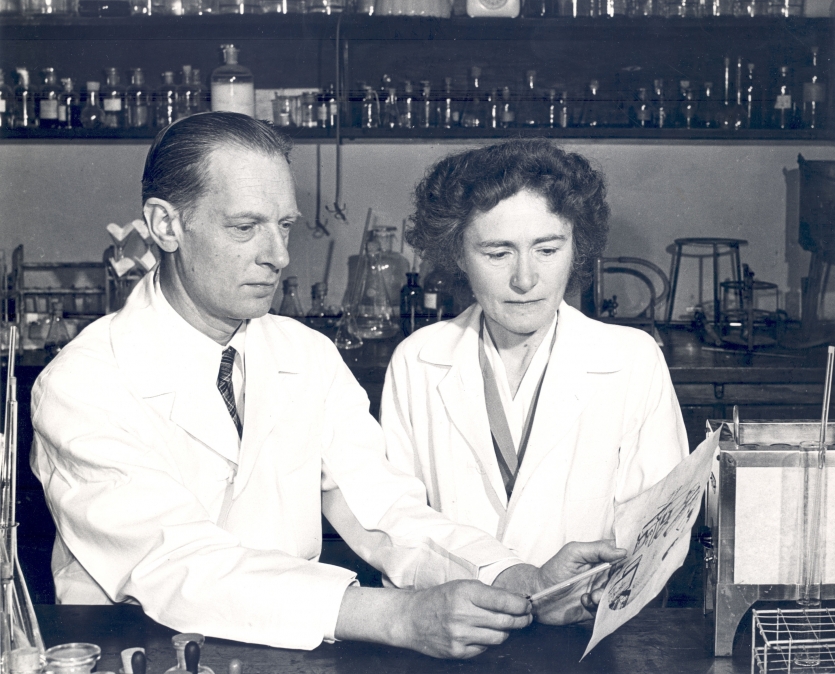
Born in Prague in 1896, Gerty Cori (née Radnitz) was named after an Austrian warship. She was an unstoppable force in an era when educational opportunities were not available to most women—she not only sailed through her undergraduate studies but was admitted to the Karl-Ferdinands-Universität Medical School in Prague in 1914.
Her parents were well-off and respected in academic circles—Franz Kafka was a frequent dinner guest in the Radnitz household—which helped Cori obtain a level of education most women in her peer group could not hope to achieve. While in medical school, she met her future husband and primary professional collaborator Carl Cori.
They made it through World War I relatively unscathed, but left Europe in 1928 to continue their work at the State Institute for the Study of Malignant Diseases in Buffalo, NY. While in Upstate New York, they began their now-famous research on the process of sugar metabolism.
While the technologies and resources offered in America were often well ahead of those they worked with back in the Austro-Hungarian Empire, Cori found that the attitudes towards women in the workplace were severely lacking. The Coris were strongly discouraged from collaborating, and were even told that a married couple who worked together would be viewed as “unamerican.”
They moved from Buffalo to Washington University in St. Louis, Missouri, where she was able to accept a position in the same university as her husband after being denied work at several other institutions. Despite having the same background, education, and accomplishments as her husband, the university only paid her a mere 10% of what her husband made, and it took her 13 years to work up to the rank he held when he began his employment there.
While nearly all their work was collaborative, her entry into the National Academy of Sciences wasn’t granted until eight years after her husband’s. In 1947, both Coris shared the Nobel Prize for Physiology and Medicine “for their discovery of the course of the catalytic conversion of glycogen.” Finally, Washington University promoted her to the position of full professor.
